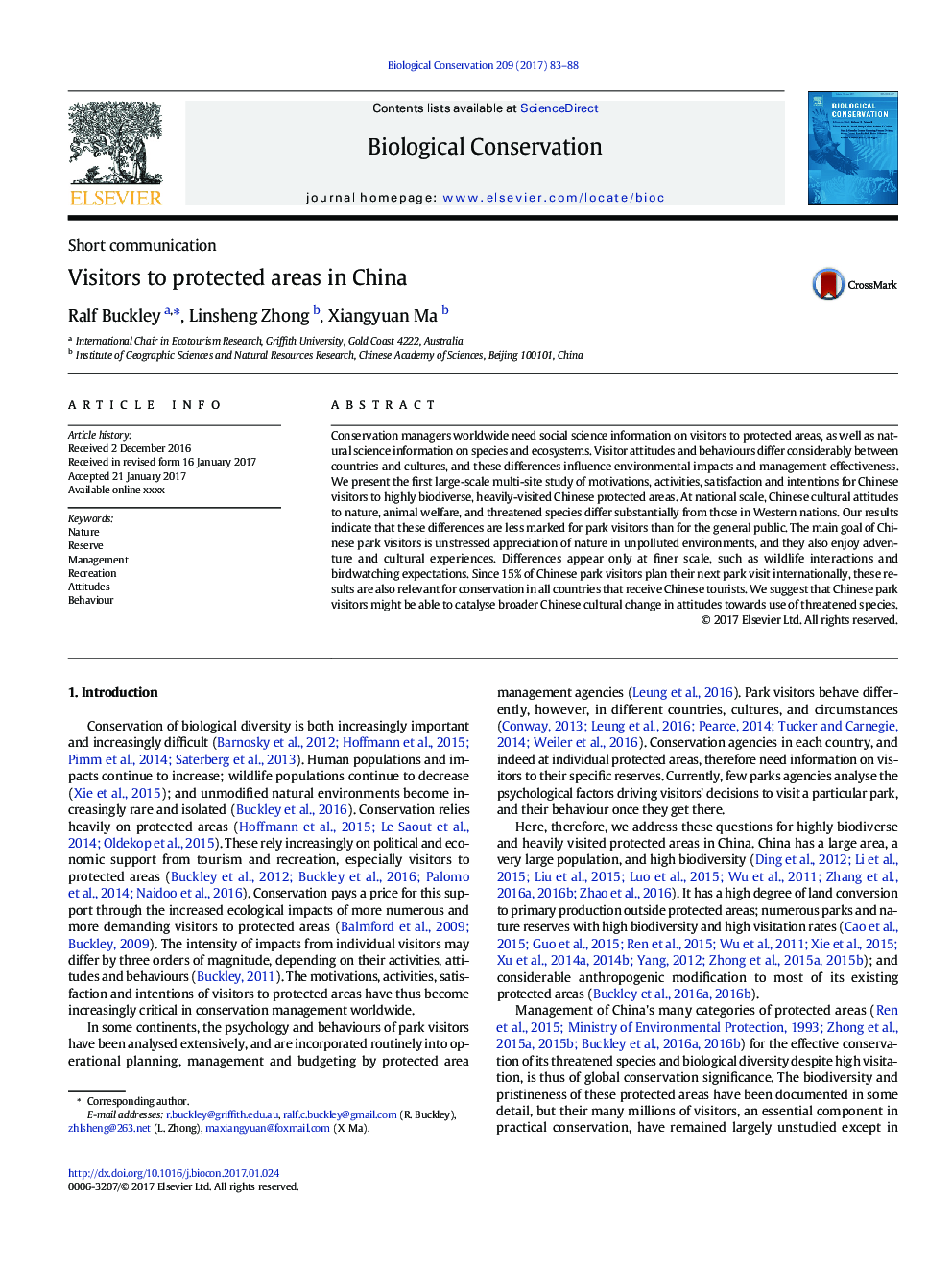| Article ID | Journal | Published Year | Pages | File Type |
|---|---|---|---|---|
| 5743360 | Biological Conservation | 2017 | 6 Pages |
Abstract
Conservation managers worldwide need social science information on visitors to protected areas, as well as natural science information on species and ecosystems. Visitor attitudes and behaviours differ considerably between countries and cultures, and these differences influence environmental impacts and management effectiveness. We present the first large-scale multi-site study of motivations, activities, satisfaction and intentions for Chinese visitors to highly biodiverse, heavily-visited Chinese protected areas. At national scale, Chinese cultural attitudes to nature, animal welfare, and threatened species differ substantially from those in Western nations. Our results indicate that these differences are less marked for park visitors than for the general public. The main goal of Chinese park visitors is unstressed appreciation of nature in unpolluted environments, and they also enjoy adventure and cultural experiences. Differences appear only at finer scale, such as wildlife interactions and birdwatching expectations. Since 15% of Chinese park visitors plan their next park visit internationally, these results are also relevant for conservation in all countries that receive Chinese tourists. We suggest that Chinese park visitors might be able to catalyse broader Chinese cultural change in attitudes towards use of threatened species.
Related Topics
Life Sciences
Agricultural and Biological Sciences
Ecology, Evolution, Behavior and Systematics
Authors
Ralf Buckley, Linsheng Zhong, Xiangyuan Ma,
